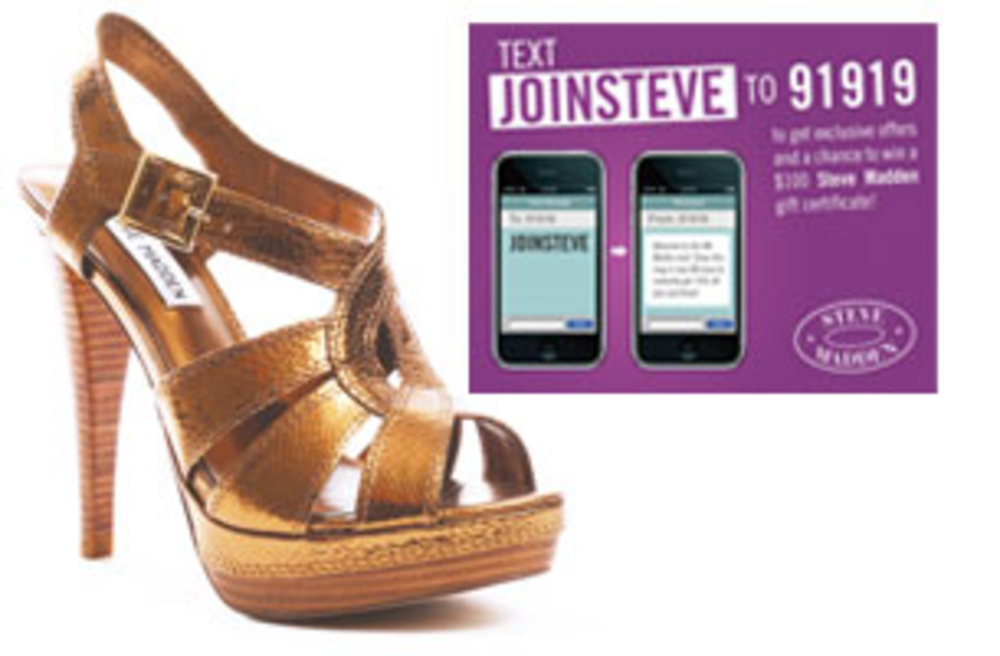Instead of trying to force some 140 million books into arbitrary genre buckets, Richard Davies, a direct e-mail belletrist for AbeBooks, consults purchase history and composes direct e-mails and landing pages that operate on a theme. An e-mail newsletter slated for December, titled “Britain in Pictures,” features a yarn from Davies and a list of books from a series about British culture that launched in 1941.
Besides loving books, bibliophiles also love to read about books, he explains. “A significant percentage of our inventory is pre-1970 books, meaning they have no International Standard Book Number (ISBN),” an important ingredient in Amazon’s recommendation algorithm, he adds.
Although AbeBooks doesn’t currently have the technical sophistication or channels many larger retailers enjoy, the notion that consumers are demanding a certain degree of personal relevancy from marketers is not lost on Davies, nor retail giants like Macy’s whose CEO Terry Lundgren announced in early November that it sent out a recent catalog in 30,000 different versions.
Jeff Max, CEO at Venda, an e-commerce software provider for retail clients like Jimmy Choo and Urban Outfitters, says the convergence of bricks-and-mortar with mobile, wedding a consumer’s geographic location with individualized promotions, can be very appealing to consumers. “I could have a Macy’s or Best Buy app that either passively or assertively requires me to check in when I’m in range, and based on my purchase history, I might get personalized promotions pushed down to my device that are redeemable at the point of sale,” says Max.
Brand apps get personal
Large retailers like Gap, Best Buy and Target,
have steadily updated app functionality and
personalization capabilities in 2010. Gap’s StyleMixer
app, which lets consumers mix and match products
and share style creations on Facebook, unlocks a
store-specifi c discount whenever the app is opened in
the vicinity of a Gap. Best Buy’s 2009 app started with
a basic offering of weekly and mobile-only specials,
and a store locator. Now, consumers can purchase
items directly via mobile phone, text SKU numbers to
receive reviews and ratings, search store inventory for
product availability, and manage preferences and
e-commerce shopping carts. The Target app enables
users to photograph and scan barcodes and add
products to “TargetLists” or registries, in addition to
delivering daily coupons. Gant, a designer clothing
brand, has integrated its magalog-sensibility into an
iPhone app, to offer stories behind new clothing lines
and videos of runway shows.
While most e-commerce personalization today is based on purchase history and tracking of behavior and preferences – shoppers searching “black denim pants” in a Bing query go down a different purchasing path than those using the same keywords in a Google search, notes Max.
Steve Madden, with the help of mobile video vendor Mogreet, recently rolled out a mobile program (with on-shelf instructional signage) that lets shoppers text in a product name to receive information or a video including colors, price points and store inventory. That information is stored to personalize future shopping experiences, in-store or electronically. To build the mobile database, Steve Madden is offering a one-time promotion to get 15% off.
Follow-up mobile and e-mail messages are then personalized based on the registered preferences, says Mogreet CEO James Citron.
For Steve Madden, “It’s really important to increase shopper diversion in-store,” he adds, because there may only be only three sales associates working on a busy Saturday afternoon.
In October, 10.5% of Steve Madden’s online traffic came in through the mobile channel, according to Andrew Koven, president of e-commerce and customer experience at Steve Madden. “Since we launched mobile [in April], we’ve had over half a million dollars in products sold directly on mobile,” says Koven, adding that an impressive 900,000 customers had visited the mobile site between April and October.
Being able to craft personalized messages that are relevant to consumers in a variety of channels, “speaks to a much higher conversion rate in terms of sales revenues,” but it also bolsters the brand element, says Citron, because it shows consumers that the brand “cares about bringing relevant information.”







